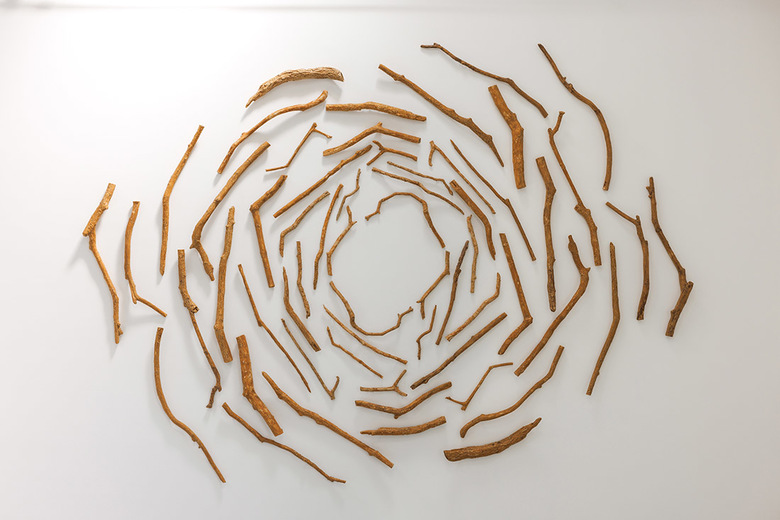
Yasmin Smith, Manchester Driftwood,
2025, white stoneware with Manchester Ship Canal driftwood ash glaze, 260.00 x 350.00 x 10.00 cm, TCG23747
(photo: Elle Fredericksen)
Manchester Driftwood traces the chemical legacy of the Industrial Revolution, a ground zero to earth’s current environmental crisis and sixth mass extinction. Throughout the period of the Industrial Revolution in eighteenth and nineteenth century Europe, the rivers and canals of Manchester, connecting to the Port of Liverpool, became the dumping ground for large amounts of toxic waste: coal ash, dyes and chemicals from factories. A legacy of heavy metal contamination remains in sediments of the Mersey and Irwell catchments, while modern agricultural pesticides, industrial effluents and urban runoff continue to pollute waterways to the present day. Manchester Driftwood addresses plants growing in these riparian ecologies and their potential to express insights into the history of this contamination. Smith gathered branches floating in the Manchester Ship Canal which she subsequently cast in clay and then burnt to produce the ash glazes for the sculptures. The colour and texture that emerge in the glaze reveals what the plants absorbed in their lifetimes and through this the ecological and human history of the site — the elements present in the water, soil and air absorbed over time and are retained by the plant as a form of memory or archive.
- » Yasmin Smith, Manchester Driftwood, 2025 — installation view
- » installation view: MA Art and Ecology Degree Show, Goldsmiths, University of London, London, 2025 | showing Yasmin Smith, Manchester Driftwood, 2025
- » Yasmin Smith, Manchester Driftwood, 2025 — installation view
- » Yasmin Smith, Manchester Driftwood, 2025 — detail
- » Yasmin Smith, Manchester Driftwood, 2025 — detail
- » Yasmin Smith, Manchester Driftwood, 2025 — detail
- » Yasmin Smith, Manchester Driftwood, 2025 — detail
- » Yasmin Smith, Manchester Driftwood, 2025 — detail
- » Yasmin Smith, Manchester Driftwood, 2025 — detail
- » Yasmin Smith, Manchester Driftwood, 2025 — detail






